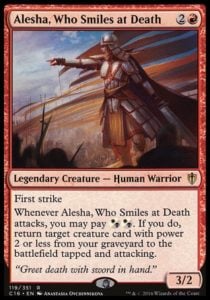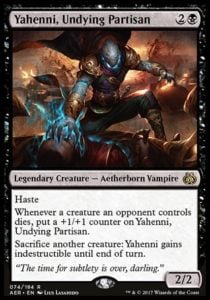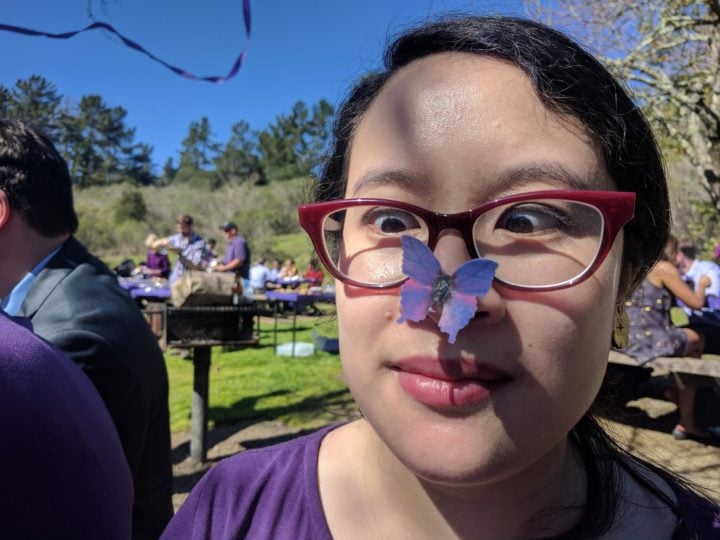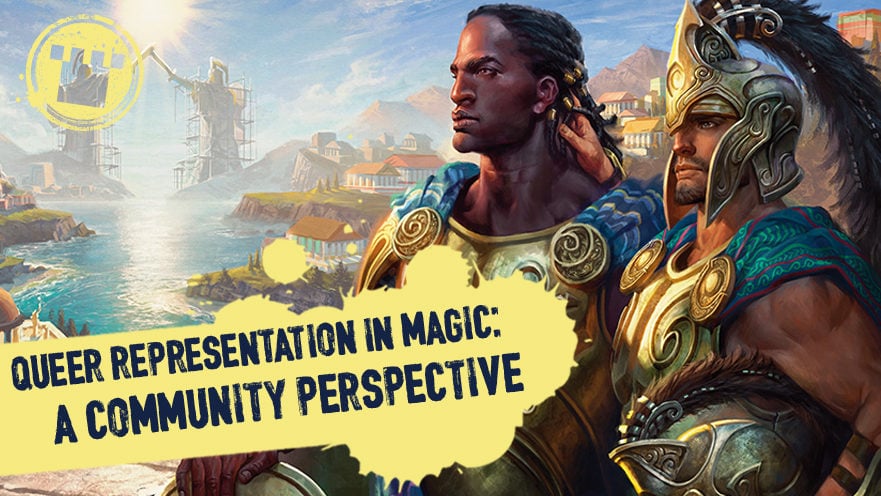Throughout Magic’s history, Wizards of the Coast has done an admirable job responding to and incorporating representation of its player base within the story and art of the game. In a Multiverse that features baloths, elves, orcs and dragons, it’s great to see diverse human characters that also span color, gender identity and sexual orientation. While Magic’s efforts to showcase sexual and gender minorities in the game are laudable, I wanted to get a better idea of how the broader queer Magic community felt about the characters presented and how they’ve been received. Identifying as a queer, bisexual person myself, it was important to me to give my LGBTQIA+ family a platform to voice their concerns and admiration during Pride this year.
To prepare for this topic, I sent out a Twitter request asking for thoughts and criticism from the queer Magic community and was immediately deluged with thoughtful and intelligent responses. Many of their stories and thoughts were both heartbreaking and inspirational, proof that representation really does matter in this game. While it’s clear that these characters resonate strongly with the queer Magic community, it’s worth examining the reasons behind their success as well as what room there is to improve.
There has been no doubt that the efforts made by Wizards of the Coast have been inspired and deserve praise. For example, while there have been other queer characters in Magic, none have been so prominent and as inspirational as Alesha, Who Smiles At Death, the strong and fearless Mardu Khan premiered during Fate Reforged. Alesha’s presence was one of the main reasons I chose to play Magic, and her greatest strength as a character has been her presentation within Magic lore. Her story of claiming identity amidst the bloody and ruthless society of the Mardu has become a source of pride for so many players, thanks in part to the research and careful consultation of trans women. This attention to detail and accuracy imbues Alesha with an authenticity that cannot be imitated:

Alesha is the reason I play Magic, knowing that she exists is what gave me the confidence to go to my lgs and play Magic.
G. Gradient, @TransGirlMagic
I find Alesha to be the most inspirational, as she embodies the courageous Mardu aligned trans person I aspire to be.
Mirabeau, @mirabeau42
Just as Alesha’s depth of character has made her an immediate success with the queer Magic community, the visual prominence of Kynaios and Tiro in their Commander 2016 release made Wizards’ opinion on featuring LGBTQ+ characters clear. Here were two Kings, committed to a loving partnership in ruling Meletis. Standing side by side, one running his fingers through the other’s hair, there is no question as to the nature of their relationship. The fact that a gay, biracial couple was deliberately chosen to be the frontispiece for one of the biggest Magic: The Gathering product releases of the year was a revelation to many players, proof that the game they were passionate about also cared for them.

Kynaios and Tiro of Meletis, to me, are the most significant [LGBTQ+] characters in Magic. They were the first canonical same-sex couple in the game, alluded to in Theros, and then shown with intimacy — that hand in the hair speaks volumes.
Anonymous
I didn’t really get how important representation was or how much it was lacking until I loaded up a pure group hug commander deck with Kynaios and Tiro on Magic Online. Sitting on my computer alone, preparing to shower my opponents with mana and card draw with my gay kings, I shed a tear by myself. Finally my game was representing me. I was seen, I mattered, I could express some aspect of my personality that I often had to shrink as my opponents called cards gay in a derogatory manner, or insulted my flashier bits of clothing.
Jason Hailman
I think Wizards has come a long way in the last few years, and I’ll be forever tickled that thousands of copies of Kynaios and Tiro were around Targets and Walmarts.
Nick Prince, @nicknprince

The presence of non-binary, androgynous characters and their relevance in the story has helped so many players feel represented and recognized. Hallar, Ashiok and the Aetherborn Yahenni all identify as neither male nor female and have helped create visibility for fans in the real world who use they/them pronouns. In the case of the androgynous Ashiok and the Aetherborn, they could be also be interpreted as asexual, as they neither show romantic nor sexual interest in any other characters. Aetherborn in particular are created as a living byproduct of refining Aether on Kaladesh, and have no desire for a romantic partner.
I appreciate all the queer characters in Magic, for providing some relatable examples of non-straight, non-cis, non-gender conforming characters… All five named characters (+Yahenni and Gonti, if you include a race that lacks gender and sexuality at all).
Nick Prince, @nicknprince
While the presence and development of LGBTQIA+ characters in the world of Magic is welcomed and needed, there is still ample room for development and improvement. One of the most frequent requests from the queer Magic community is for queer characters to be central to the story. None of the overtly LGBTQIA+ main characters in Magic lore has been revisited or fleshed out to the same degree their straight, cis counterparts have been.
Alesha got the most focus but by the time we learn about her she’s been dead in the story for 1000 years. i love the character but i hate that they basically killed her off as soon as we met her.
G. Gradient, @TransGirlMagic
Hallar I should love, they use my pronouns and [h]ave my hair [and] a cool kavu. I want to love them as my representation in game, the idea seems great, but all we have is a blurb…
Tony Houst
Based on the responses I heard from the community, there is no doubt that the appetite for increased sexual and gender diversity in Magic’s story and characters is ferocious.
Overall, it’s clear that while sexual and gender minorities are a welcome and much needed presence in Magic Story, it’s even more important to see those characters develop. There is ample opportunity in Magic to create characters who are not just defined by their sexuality or gender, but by their kindness, ambitions, passions and intelligence. As CalvaryWolfPack, a global moderator on MTG Salvation and author of Treasure Cruisin’ says:
…As such, do not define your fictional characters by being LGBT+. Rather, define them by who they are as a whole, and while that does include sexuality, gender orientation (and I’ll expand this to ethnicity), there is far more to a person than their sexual preference, their gender, and the color of their skin.

A consummate lover of books, tea, food and instant-speed kill spells, Michelle is a person of many passions. Her hobbies include cuddling cats, throwing pottery, and analyzing Magic lore from a literary perspective. She is also a co-host of the Vorthos comedy podcast, “The Loregoyfs,” and she comprises a full 25% of The Felidar Guardian (specifically the right hand, left ear and both scapulas). Her CMC is 2BWU, and her ETB trigger creates two 1/1 cats with lifelink and trample.

